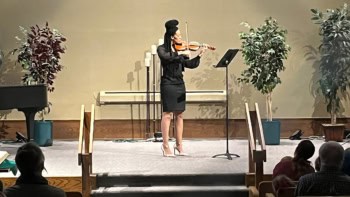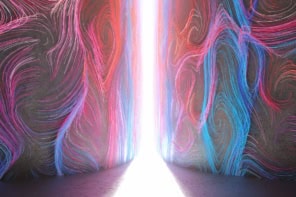
Movies of Rydberg atoms – those containing an electron excited to a high-energy state – could soon be made using free-electron lasers. That is the claim of Adam Kirrander and Henri Suominen of the University of Edinburgh in the UK, whose calculations suggest that the motion of an atom’s electron cloud can be tracked on picosecond timescales. As well as improving our knowledge of how chemical reactions proceed, their technique could also help physicists gain a better understanding of the curious phenomenon of “slow light”.
In addition to having a large electron cloud, an unusual feature of a Rydberg atom is that its highly excited electron can exist as a coherent superposition of several different atomic orbitals. These orbitals interfere with each other, which means that the electron cloud changes shape with time. These fluctuations are much slower than the movement of electrons nearer the atomic nucleus, which is why Kirrander and Suominen argue that the fluctuations could be tracked by firing intense and coherent pulses of X-rays at the atoms.
Such pulses can be produced at accelerator-based free-electron lasers such as the Linac Coherent Light Source (LCLS) at the SLAC National Accelerator Laboratory in California or the X-ray Free Electron Laser (XFEL), which is set to come online at DESY in Hamburg, Germany in 2016. Kirrander and Suominen have also calculated that the motion of the corresponding “electron hole” in the atom – the superposition of inner orbitals that the electron has left behind – can be visualized as well. As the inner electrons are involved in chemical reactions, the new technique could therefore be a powerful tool for chemists.
Pump and probe
The experiment proposed by the Edinburgh researchers would involve firing a pulse of “pump” light lasting about 1.5 ps from a conventional laser at a noble gas, whuch would put some of the atoms into a coherent superposition of highly excited states. A few picoseconds later, an X-ray “probe” pulse from a free-electron laser would then be fired at the gas, with some of this radiation scattering elastically from the electron cloud. The wavelength of the X-rays would be on a par with the size of the Rydberg atoms, which means that the scattered radiation would create a diffraction pattern.
This pattern could then be converted into a direct image of the electron cloud using a mathematical algorithm, while a “movie” of its motion could be made by repeating the measurement and varying the delay between the pump and probe pulses in increments of several picoseconds. Peter Weber of Brown University in the US told physicsworld.com that such an experiment should be feasible at the LCLS or XFEL as his team has already carried out “conceptually similar experiments” on molecules at the LCLS, although he did not specifically look at the electronic wavefunctions.
“Truly phenomenal”
While the Rydberg states of noble gases are not particularly interesting to chemists, Weber says that extending the new experimental concept to molecules would allow real chemical information to be obtained. That is because Rydberg states are “observers” of molecular structure, so Kirrander and Suominen’s technique could provide important information about the electron-density distributions of the inner electrons that take part in a reaction. “Many chemical reactions rearrange electrons, sometimes on excited electronic surfaces, and to observe the rearrangement of electrons while reactions proceed would be truly phenomenal,” Weber says.
The technique could also be used to gain a better understanding of how X-rays interact with electrons in atoms and molecules – a process that lies at the heart of X-ray diffraction. Physicists know that slow-moving electrons scatter elastically from X-rays, while fast-moving electrons interact via inelastic processes. Kirrander believes that the new technique could shed light on the crossover regime between these two processes, which would help scientists interpret scattering data from free-electron lasers.
Another possible use for the technique could be the study of an effect called “Rydberg blockade”, which occurs in ultracold atomic gases. In this case, the excited electron is shared by several nearby atoms and it is not possible for other Rydberg states to form in the vicinity. Rydberg states propagate through the atomic gas like a sluggish photon and have been used by physicists to create “slow light”.
UPDATE: The proposal has now been published in Physical Review Letters.


